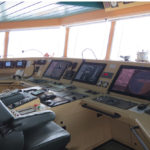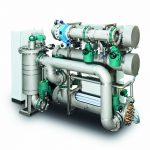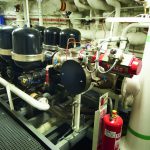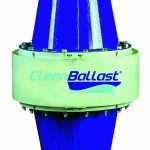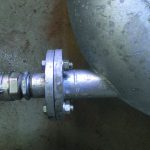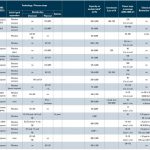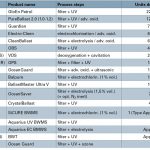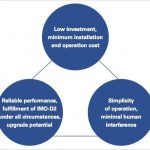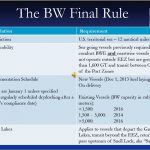Makers of BWTS are suffering from delays and lack of clarity regarding the time line for implementation of IMO Ballast Water Convention, while fitting their systems to stricter requirements by US Coast Guard. Latest developments analyzed by Michael vom Baur
Implementation of Ballast Water Convention: Where are we today?
The International Convention for the Control and Management of[ds_preview] Ship’s Ballast Water and Sediments had been adopted in 2004 and per 2 January 2013 was ratified by 36 countries (threshold = 30) representing 29,07 % of the world tonnage (threshold = 35 %), not yet enough for setting the convention in force. Relevant shipping countries such as Panama, China, Greece, Cyprus, UK, Japan, Malta, India, Italy, Finland, Estonia, Australia, Argentina, Chile, Peru, Singapore, Indonesia are not yet on board. The German President has just signed the ratification order in the first days of February 2013, during the next months the final documents will be prepared and submitted to IMO. The German ratification will raise the tonnage share to around 30,4 %, still not enough to unlock the convention. When HANSA provided its BWTS (Ballast Water Treatment Systems) update in November 2011, most experts expected the ratification to be completed already within the first half of 2012. So, what went wrong – at least from the BWTS makers’ perspective?
A number of concerns, shared by operators and several countries, have meanwhile been presented to IMO. In a nutshell, these concerns are: How can the shipping community be burdened with investments of billion dollar magnitude if the type approval of the systems to be installed does not adequately reflect their function in the variety of real conditions, and if no agreed methods and analytics for port state control are in place? For example BIMCO, Intertanko, Intercargo and other shipping associations submitted a paper with challenges to IMO’s Marine Environment Protection Committee (MEPC) in July 2012, together with Liberia, Panama and the Marshall Islands. The main points stated therein are shared by the International Chamber of Shipping (ICS) and many other players and are as follows:
• need for revision of the IMO approval guidelines G8 to improve transparency and robustness,
• sufficient availability of BWTS in time with the schedule and sufficient facilities to install them (under the pressure of a short implementation schedule),
• survey and certification requirements for ships built prior to ratification of the convention, and (very important)
• agreement on practicable and representative sampling and analysis methods for port state control.
It could well be expected that »owner dominated« registers will not sign the ratification documents until acceptable solutions have been found and implemented, which – knowing the IMO procedures – is hardly possible before 2014.
On this background the original implementation schedule seems to be obsolete and quite a few voices are already calling for a new adjustment. All this is bad news, in particular for the BWTS makers who meanwhile have to survive a much longer start-up period than expected, but also for the ship operators who have to cope with planning and investment uncertainties in addition to the financial constraints of the actual shipping crisis.
In October 2011, according to makers’ reports approximately 240 BWTS were installed and 610 in the order book. Fourteen months later, in January 2013, makers report almost 500 systems delivered and nearly 1,500 on order. Most of them are designated for new ships under construction with deliveries stretching into 2016, while the retrofit market with an estimated potential of nearly 60,000 ships has not really lifted off so far.
However, a new market driver appeared on the scene: the US Coast Guard (USCG), which implemented new regulations in March 2012 (Fig. 1), according to which newly built seagoing ships sailing US waters (keel-laid after 1 December 2013) must have a BWTS, certified by a USCG approved test facility; for already installed systems approved by a foreign authority there may be a five-year grandfather period. Existing ships must be retrofitted with such BWTS between 2014 and 2016 during their first scheduled dry-docking, depending on their size. In addition, the USCG approval guidelines, although basically targeting the IMO-D2 performance standard, are requiring testing in a considerably wider range of operating conditions, such as salinity, temperature, biologic and sediment load.
Several experts say that this will improve transparency for performance comparison and will contribute »to separate the wheat from the chaff« and thus guarantee more robustness of the BWTS processes. In any case, there is new homework for BWTS makers, who will have to undergo an additional, more descriptive testing and approval process for an extended range of water conditions. But there is also a new market push created by the US move.
Lessons learnt in operations since 2008
Up to now, only a few dozen of the ballast water systems presently delivered are in regular operation. Thus, the operating experience regarding the different processes is still limited. However, some lessons could already be learnt: The variety of water conditions found on the worldwide trade routes and in ports is obviously more challenging to the treatment processes than expected. Along some coasts, for example, the number of organisms in the water may be much higher than in others, the same applies for sediment particles contained in the ballast water intake. These particles present a challenge to some filter configurations and have already led to modifications. But water transparence is also a key parameter for the performance of UV lamps; some performance limitations in turbid waters had to be noted. Further parameters with great influence are the water salinity and temperature: Electro-chlorination requires certain salinity since the »raw material« for the oxidants must be in the water, if adding of chemicals should be avoided. This has led to reduced functionality of some processes in coastal areas, in channels or ports with brackish or fresh water conditions. While electrolytic technology functions optimally above 15 °C seawater feed, performance of hypochlorite generation is reduced at water temperatures between 10 to 15 °C and most of such technologies do not function at all below 5 °C. Below 10 °C the production of oxygen predominates chlorine and below 5 °C the formation of chlorine hydrate significantly reduces the efficiency of the generator. Colder temperatures on the intake side also considerably increase the power demand of electrolytic BWTS.
Several makers have addressed these experiences by process or equipment modifications and improvements in the meantime. In any case the phrase »under all circumstances« in the decision triangle for the selection of the most suitable BWTS (Fig. 2) should be recognized as of prime importance and the possible future trade profiles as well as the ambient and water conditions to be expected by the ship should be carefully analyzed before selecting a BWTS.
Two makers, Hamann/Evonik (Sedna: hydrocyclone, filter, chemicals/peroxide) and Wilhelmsen Technical Solutions (Unitor: filtration, electro activation, ozone) have withdrawn their systems from the market. Wilhelmsen said in a press release in February 2012 that it is committed to developing solutions to address the environmental challenges of the maritime industry, driven by regulations and, ultimately, in convenient and effective compliance with them. »The verification programme showed that the system at this stage of development will not, in our opinion, provide our customers with an effective, fully compliant solution for the varied and dynamic water conditions encountered by a vessel engaged in global trade,« Petter Traaholt, President of Wilhelmsen Technical Solutions, said in the statement explaining the withdrawal.
This statement is interesting insofar as the Wilhelmsen’s Unitor system was already IMO approved and Wilhelmsen also is a large and innovative shipowner – a potential BWTS user! That poses the question whether the IMO approval guidelines G8 and G9 (with active substances) address the right things and guarantee compliant systems for worldwide trade?
Type approval: What will be the future yardstick?
The IMO type approval guidelines G8 and G9 (with active substances) have been drafted in 2008. Since the early days a lot has been learnt, as Dr. Stephan Gollasch, senior scientist at GoConsult confirms, who was involved in the history of ballast water treatment from the beginning. Gollasch knows that many experts would plea for a review and update of the G8 guidelines, one of the key concerns of the owners’ and operators’ association. However, many signatory states hesitate to open this box before the Ballast Water Management Convention finally is in force, because some countries that have already ratified the convention might use the opportunity to re-open the discussion regarding the entire convention. On the other hand, the unsolved issues around the G8 guidelines may be an important reason for missing ratification – an uncomfortable »lock-in« situation, which definitely requires a lot of diplomatic skill in IMO during the further proceeding.
In this situation the new USCG type approval requirements generate a new momentum and may even serve as a kind of blueprint for IMO. Being more descriptive, they aim at a better proof of function under different ambient conditions to be expected in worldwide trading as the IMO G8 (G9) guidelines have provided, while targeting the same effluent standard as IMO-D2. On the other hand, the USCG rules stipulate details which may be seen as bureaucratic burden and also that the tests must be done in laboratories accepted by the USCG. At present, USCG has accepted only one consortium under the lead of NSF Ann Arbor, Michigan, which may lead to bottleneck situations soon.
According to Gollasch some processes obviously have already reached their limits when undergoing the G8 procedures and are likely to face challenges when undergoing new tests as stipulated in the more detailed and descriptive USCG approval procedures. In order to build a bridge for BWTS installed before March 2012, which had been approved by a foreign administration according to IMO-G8/D2 (so-called »Alternate Management Systems« / AMS), the USCG offers a short term approval and a five-year grandfather clause, provided that the maker has applied for full USCG type approval. All this is not accelerating market development and transparency. But there is even another unsolved issue actually concerning makers and clients of BWTS.
Port state control: the unknown factor
The IMO Ballast Water Management Convention stipulates for the BWTS a positive proof of function before starting ballast water discharge. This would mean a test each time before or while entering port, e. g. to be performed in the framework of port state control (PSC). What sounds logical and normal at first glance, is in fact posing a number of important and critical questions: How can random errors be avoided and samples be representative for the function of the BWTS? Are reliable and comparable analytic methods available, fit for use on board and compliant with operational constraints?
When looking into this subject a bit deeper, it becomes obvious that three aspects are »competing«: Firstly, we are dealing with small living organisms and biological tests which are normally executed under controlled laboratory conditions with sufficient time available. On the approach or in port there is no time to wait for one or two days until the clearance for ballast discharge can be given. Secondly, biological and counting methods are based on statistics, which require sufficient sample quantities for being representative. On board – in particular if test effluent water would have to be stored in tanks before discharge clearance after a positive test result – sample sizes are limited and should not be as large as several tons. Thirdly, ship operational aspects and safety of the ship must govern the test procedure (and not vice versa). The ship should not be forced to wait for discharge permissions in each port, ballast operations may be vital for stability and longitudinal strength and must always be in command of the captain.
In order to find practical solutions, some research activities have been sponsored by
the EU Commission (projects BWO, VECTOR), where Dr.Gollasch’s GoConsult is involved, and by the German authority »Bundesamt für Seeschifffahrt und Hydrographie« (BSH / Federal Maritime and Hydrographic Agency of Germany), which was performed by SGS.
Basically the following aspects have been investigated: representative sampling on board, sampling systems and rapid in-situ analytics. SGS’s Head of Project, Dr. Lothar Schillak, explains that meanwhile for all aspects which have been lab tested in large scale e. g. at UAS Flensburg practical solutions could be developed. During the IMO BLG 17 Plenary on 4 February 2013 results were presented to a larger audience for the first time and the solutions developed by SGS have now been included as an example by IMO BW working group in its respective papers. It has further been decided to start an international on-board testing phase now. Such activities will be done on two German vessels, starting in March 2013.
Schillak says that only relatively small and easy to mount installations would be necessary for isokinetic representative sampling from the ballast pipes (Fig. 3). The analytic devices, which are a combination of filters, optical counters and bio tests, would fit into a »big tool box« and could be carried by the inspectors, and they are probably even suitable for boarding from a pilot boat. Sample volumes of up to 18 m3 have been tested so far. The tricky part is the timing: While filtering, basic bio tests and counting methods may only take minutes; the bio step for bacteria analysis, which is basically an incubation test known from labs, usually needs 24 h + before presenting detailed results. Although SGS has managed to cut down this time significantly to six to eight hours, this would be much more than a ship can usually wait until clearance for ballast water discharge can be given. Even if the inspection team would come on board with the pilot and use the time during approach for testing and proving the function of the BWTS (storing the effluent in an empty ballast tank), this procedure doesn’t seem to be practicable for usual ship operation. Gollasch can imagine the development of a faster, only indicative bacteria test. However, the dimension of the challenge becomes evident when taking into account that larger ports such as Singapore or Rotterdam receive more than 100 ships per day.
For this reason concerns are still being expressed by shipping associations and there are ongoing discussions in IMO circles about whether a change of procedure for the functional proof of BWTS would be necessary. Schillak describes a possible alternative as a kind of »inspection label« like issued for cars in context with regular authority inspection and to be presented during PSC. For BWTS this regular inspection could be performed e. g. once per quarter and independent of specific port calls. However, Schillak expects the decisive IMO discussions to start later this spring for the earliest, after full understanding of all development results and performing the on-board test programme. This would enable a final decision regarding the procedure (in best case) during spring 2014; however, it could likely be later.
Makers‘ update
As described above, the makers of BWTS are suffering from delays and lack of clarity regarding the time line for the implementation of the Ballast Water Convention, while being asked to do additional homework by USCG. This is bitter in particular for those (often inventor-driven) companies which have venture capital shareholders and do not operate in the context of a large group. During HANSA’s recent makers’ interviews the comments were all the same: at present only newly built ships on order; strong price competition on low level, but expectation of capacity gaps and subsequent price increases as soon as the »brake would be released« (IMO ratification); only first steps towards USCG approval possible at this time; AMS status would bridge for a while.
Since HANSA’s BWTS review in November 2011 two makers (Wilhelmsen’s Unitor and Hamann’s Sedna) have withdrawn their products and no new systems entered business. Some makers have received IMO type approval in 2012, now 28 systems are approved according to IMO standard. Some have extended their standard size range, others have improved certain components or the footprint of their system.
Makers indicated a present system price level between 180 and 250 € per m³/h for plants with large capacity (~ 6,000 m³/h) and between 300 and 350 € per m³/h for smaller plants (~ 500 m³/h). However, such figures are suitable for a first orientation only and do not include installation and possible conversion cost, which may be rather different from ship to ship and even system to system.
Michael vom Baur






